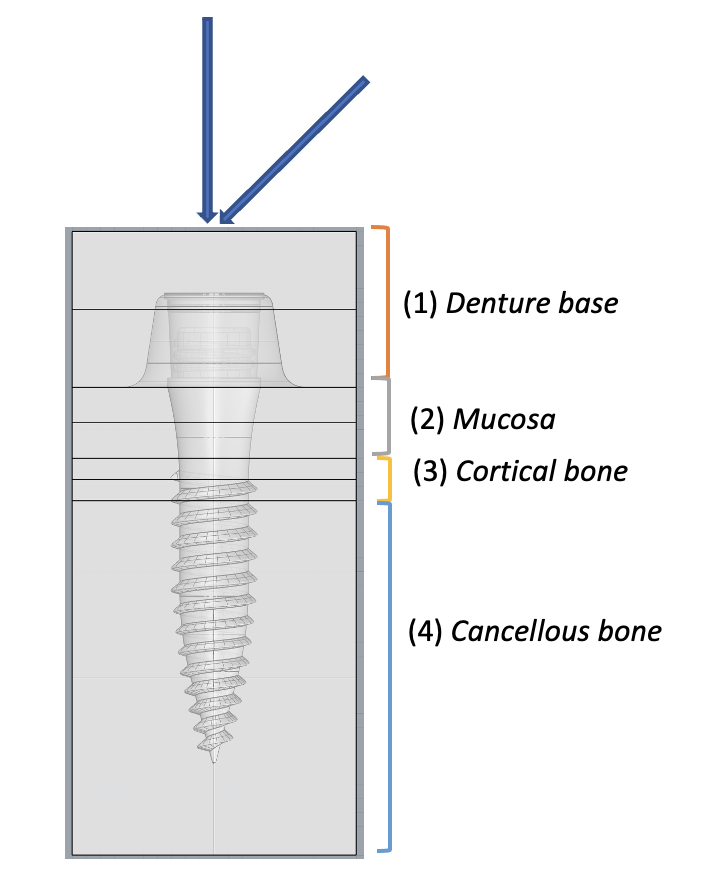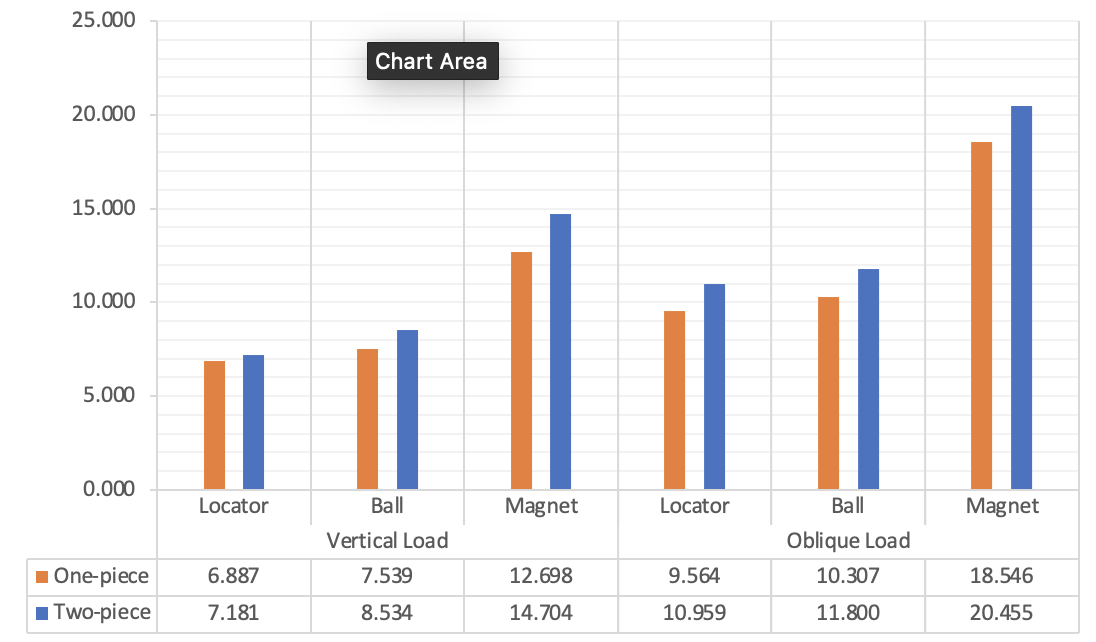IADR Abstract Archives
Stress Distribution of One-Piece and Two-Piece Mini-Implant Overdentures (Various Attachments)
Objectives: Mini-implants have been reported with lower mechanical strength and increased risks of implant fractures despite numerous recognizable advantages. The optimal mini-implant attachment system with the one-piece or two-piece concept regarding stress distribution remains unclear. This study aims to investigate and compare the stress distribution within implants themselves of one-piece and two-piece mini-implant overdentures with 3 different attachment systems (Ball, Locator, and Magnetic) using 3D finite element (3D FE) analysis. The result of this study may assist clinicians in choosing the most beneficial implant attachment system design for mini-implant overdenture.
Methods: Six 3D-FE models simulating a segment of the mandible incorporating one-piece or two-piece mini-implant having Ball, Locator, or Magnetic attachment system and overdentures were created using Rhinoceros 7. Vertical and oblique loading (45° to the longitudinal axis of the implant) of 100N was applied onto dentures. Stress distribution within implants was analyzed using ANSYS 19. Von Mises stress was chosen since it is accepted as metal materials’ fracture criterion based on elastic mechanics.
Results: Though one-piece mini-implants tended to show lower maximum stress compare with two-piece ones (average 12.11%), there was no statistically significant difference. The stress value in mini-implants under oblique loading was approximately 1.419 times that under vertical loading. Maximum von Mises stress was found at the neck of implants, which surrounded by cortical bone in all models and during both loading conditions.Magnet attachment systems experienced the greatest stress among the three designs.
Conclusions: Within the limitations of this study, the following conclusions might be drawn: There is a trend that one-piece mini-implants exhibited lower levels of implant maximum equivalent stress comparing to two-piece mini-implants. The oblique force was considered more unfavorable for implant stress distribution. Mini-implants overdenture with Locator and Ball attachment systems demonstrated lower stress within implants than Magnet attachment system under vertical and oblique loading conditions.
Methods: Six 3D-FE models simulating a segment of the mandible incorporating one-piece or two-piece mini-implant having Ball, Locator, or Magnetic attachment system and overdentures were created using Rhinoceros 7. Vertical and oblique loading (45° to the longitudinal axis of the implant) of 100N was applied onto dentures. Stress distribution within implants was analyzed using ANSYS 19. Von Mises stress was chosen since it is accepted as metal materials’ fracture criterion based on elastic mechanics.
Results: Though one-piece mini-implants tended to show lower maximum stress compare with two-piece ones (average 12.11%), there was no statistically significant difference. The stress value in mini-implants under oblique loading was approximately 1.419 times that under vertical loading. Maximum von Mises stress was found at the neck of implants, which surrounded by cortical bone in all models and during both loading conditions.Magnet attachment systems experienced the greatest stress among the three designs.
Conclusions: Within the limitations of this study, the following conclusions might be drawn: There is a trend that one-piece mini-implants exhibited lower levels of implant maximum equivalent stress comparing to two-piece mini-implants. The oblique force was considered more unfavorable for implant stress distribution. Mini-implants overdenture with Locator and Ball attachment systems demonstrated lower stress within implants than Magnet attachment system under vertical and oblique loading conditions.



